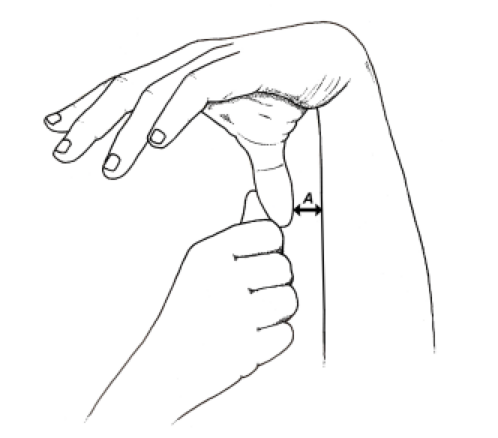It’s been over 25 years since Alfredson et al. developed the heavy load eccentric protocol for managing Achilles tendinopathy and despite its continued popularity, outcomes with this protocol have never been that good. In fact, nearly 60% of people who perform this exercise routine continue to be symptomatic 5 years later. The authors of this current study suggest that in order for tendon rehab to be successful, the applied weight should be heavy enough to cause the tendon to lengthen between 4.5 and 6.5% of its resting length. If excessive weight is used while exercising and the tendon elongates more than 9%, the tendon starts to break down under the excessive stress and the athlete will remain symptomatic. In contrast, if the load is too low, the tendon is not stressed sufficiently to initiate tenocyte remodeling and the tendon will not heal properly. In this study, the authors used ultrasonography to evaluate tendon elongation as the loads were gradually increased and had athletes perform isometric exercises using the specific force that caused their tendons to elongate 6%. The personalized exercises were performed 3 times per week for 31 weeks and outcomes from this group were compared to a control group, who did conventional heavy resistance exercises.
At the end of this study, the intervention group performing the personalized patellar tendon training had significantly better outcomes, with improved extensor muscle strength and increased patellar tendon stiffness. The intervention group performing targeted exercises also had measurable reductions in patellar tendon strain during the season, indicating “a more balanced adaptation between muscle strength and tendon stiffness.” Importantly, a few of the athletes in the control group had tendon strains in excess of 13% while performing the heavy load routine, which has been correlated with an increased risk of injury. One of the more interesting parts of this study was that the authors refer to prior research showing that individuals who do tendon training routines 2 times per week get no appreciable improvement in tendon strength. In their protocol, athletes performed 4, 3-second isometric contractions with each contraction followed by a 3-second rest. A total of 5 sets were performed, 3 times per week. The exercise intensity in the intervention group varied between 47% and 90% full effort, depending upon the amount of force necessary to produce the desired 6% tendon strain. Note that this amount of force is significantly lower than most tendon rehab protocols, which typically go to 90% full effort.
The take-home from this research is that if you have an athlete that is not responding to heavy resistance training protocol, consider modifying the load and making sure they are doing their exercises 3 times per week. Although the authors did not discuss whether or not you can determine the ideal amount of weight to incorporate during tendon rehab without using ultrasonography, and I personally feel you can select the ideal weight based on the person’s natural ligamentous laxity. For example, I’ve noticed that people with generalized ligamentous (as determined by measuring the thumb-radius index) typically do well when exercising at 50 to 60% full effort (Fig. 1). In contrast, extremely stiff people with 5 cm or more thumb-radius indexes almost always have to go to 90% full effort to induce appreciable change in tendon resiliency.

